Description
Familiarity with treatment
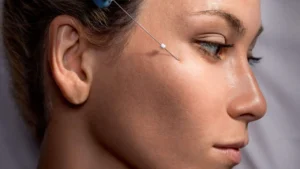 A thread facelift, also known as a thread lift or a non-surgical facelift, is a minimally invasive cosmetic procedure that aims to lift and tighten the skin of the face and neck. It is a popular alternative to traditional facelift surgery for individuals who want to achieve a more youthful appearance without undergoing surgery.
A thread facelift, also known as a thread lift or a non-surgical facelift, is a minimally invasive cosmetic procedure that aims to lift and tighten the skin of the face and neck. It is a popular alternative to traditional facelift surgery for individuals who want to achieve a more youthful appearance without undergoing surgery.
During a thread facelift, dissolvable sutures with small barbs or cones are inserted into the skin through tiny incisions. These sutures are made of biocompatible materials, such as polydioxanone (PDO), and are commonly used in medical procedures. The barbs or cones on the sutures help to lift and reposition the skin, providing a subtle lifting effect.
The procedure is typically performed under local anesthesia, and the sutures are strategically placed to target specific areas of concern, such as the cheeks, jowls, or neck. Once the sutures are in place, they are gently pulled to lift and tighten the skin. The excess thread is then trimmed, and the incisions are closed.
The primary benefits of a thread facelift include:
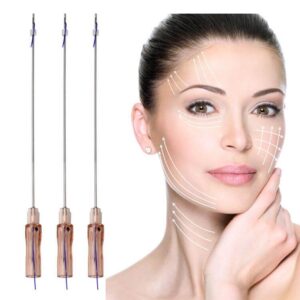 Minimally invasive: A thread facelift is less invasive than traditional facelift surgery, as it involves smaller incisions and does not require extensive tissue manipulation or removal.
Minimally invasive: A thread facelift is less invasive than traditional facelift surgery, as it involves smaller incisions and does not require extensive tissue manipulation or removal.- Quick procedure: The procedure can usually be completed within an hour, making it a convenient option for individuals with busy schedules.
- Minimal downtime: Compared to a surgical facelift, the recovery time for a thread facelift is generally shorter. Most individuals can resume their normal activities within a few days.
- Natural-looking results: The lifting effect provided by the threads can result in a subtle and natural-looking improvement in facial appearance. The threads also stimulate collagen production, which can further enhance the skin’s texture and firmness over time.
It’s important to note that the results of a thread facelift are not as dramatic or long-lasting as those of a surgical facelift. The effects typically last for around 1-2 years, as the threads gradually dissolve and are absorbed by the body. Additionally, the procedure may not be suitable for individuals with significant skin laxity or those seeking more significant changes in their facial appearance.
Types of Threads Used in Thread Lifts
-
-
PDO Threads: These threads are suitable for facial rejuvenation and provide a regenerative and firming effect that visibly improves skin quality. However, they are not ideal for tissue lifting and are placed superficially without barbs.
- Longevity: PDO threads typically last for about 6 months.
- Usage: Suitable for skin rejuvenation and mild lifting.
-
PLA Threads: These threads are designed for moderate lifting and provide enhanced support to lift sagging tissue. They promote collagen formation around the threads and are effective for areas on the face and body.
- Longevity: PLA threads can last for approximately 12 months.
- Usage: Ideal for moderate tissue lifting and collagen induction.
-
PCA Threads: These threads are known for their longevity and are effective for lifting sagging skin. They can last for 12-15 months, making them suitable for long-term lifting effects.
- Longevity: PCA threads offer long-lasting lifting effects.
- Usage: Recommended for sustained tissue lifting and rejuvenation.
If you are considering a thread facelift, it is essential to consult with a qualified and experienced plastic surgeon who can assess your specific concerns, discuss the potential benefits and risks, and recommend the most appropriate treatment plan for you.
Who is it suitable for?
A thread lift, or thread facelift, is generally suitable for individuals who have mild to moderate signs of facial aging and desire a subtle lift and tightening effect. It can be a suitable option for those who are not ready for or do not want to undergo a surgical facelift. However, the suitability for a thread lift is determined on an individual basis, and it is important to consult with a qualified plastic surgeon to assess your specific concerns and determine if it is the right procedure for you.
A thread lift may be suitable for individuals who:
- Have mild to moderate skin laxity: Thread lifts are most effective for individuals with mild to moderate sagging or laxity in the skin of the face and neck. It can help lift and tighten the skin, improving the appearance of jowls, nasolabial folds, and sagging cheeks.
- Desire a non-surgical option: Thread lifts are a non-surgical alternative to traditional facelift surgery. If you prefer a minimally invasive procedure with less downtime and a quicker recovery compared to surgery, a thread lift may be a suitable option.
- Have realistic expectations: It is important to have realistic expectations about the results of a thread lift. While it can provide a subtle lift and improvement in facial appearance, the results are not as dramatic or long-lasting as those of a surgical facelift.
- Are in good overall health: Like any medical procedure, a thread lift requires good overall health. It is important to disclose your complete medical history to the surgeon during the consultation to ensure that you are a suitable candidate for the procedure.
- Are willing to follow post-operative care instructions: Following the post-operative care instructions provided by your surgeon is crucial for optimal healing and results. This may include avoiding certain activities, taking prescribed medications, and attending follow-up appointments.
Who is it not suitable for?
While a thread lift can be a suitable option for many individuals, there are certain cases where it may not be recommended. It’s important to consult with a qualified plastic surgeon to determine if a thread lift is the right procedure for you. Here are some factors that may make a person not suitable for a thread lift:
- Severe skin laxity: A thread lift is most effective for individuals with mild to moderate skin laxity. If you have significant sagging or loose skin, a surgical facelift may be a more appropriate option to achieve the desired results.
- Excessive facial volume loss: Thread lifts primarily address sagging and provide a subtle lift. If you have significant volume loss in the face, such as hollow cheeks or deep wrinkles, other treatments like dermal fillers may be more suitable to restore volume and enhance facial contours.
- Unrealistic expectations: If a person has unrealistic expectations or desires a significant transformation that cannot be achieved with a thread lift, the surgeon may recommend alternative procedures or treatments.
- Medical conditions or contraindications: Individuals with certain medical conditions, such as bleeding disorders, autoimmune diseases, or active infections, may not be suitable candidates for a thread lift. It is important to disclose your complete medical history to the surgeon during the consultation.
- Allergies or sensitivities: If you have known allergies or sensitivities to the materials used in thread lifts, such as polydioxanone (PDO) or other biocompatible materials, the procedure may not be suitable for you.
- Insufficient facial tissue thickness: The success of a thread lift depends on the ability of the threads to hold and lift the skin. If a person has thin or insufficient facial tissue, the threads may not provide the desired lift and longevity.
- Previous facial surgery or treatments: If you have recently undergone facial surgery or certain treatments, such as laser resurfacing or deep chemical peels, it may be necessary to wait until the tissues have fully healed before considering a thread lift.
It’s important to have a thorough consultation with a qualified plastic surgeon who can assess your individual circumstances and determine if a thread lift is appropriate for you. They will consider your medical history, skin condition, and aesthetic goals to provide personalized recommendations.
Advantages
Thread lift is a popular cosmetic procedure that offers several advantages. Here are some of the key advantages of thread lift:
- Non-surgical: Thread lift is a non-surgical procedure, which means it does not involve any major incisions or general anesthesia. This reduces the risks and complications associated with surgery and allows for a faster recovery time.
- Minimally invasive: The procedure involves the insertion of thin threads into the skin to lift and tighten sagging areas. This minimally invasive approach results in less trauma to the tissues compared to traditional facelift surgery.
- Quick procedure: Thread lift can usually be completed in under an hour, making it a convenient option for individuals with busy schedules. It is often referred to as a “lunchtime facelift” because of its short duration.
- Immediate results: One of the significant advantages of thread lift is that the results are visible immediately after the procedure. The threads provide an instant lifting effect, improving the appearance of sagging skin and wrinkles.
- Natural-looking results: Thread lift provides a natural-looking lift to the face. The threads are strategically placed to lift and reposition the skin, resulting in a more youthful and refreshed appearance. The procedure does not alter the natural facial features but enhances them.
- Stimulates collagen production: The threads used in a thread lift are typically made of biocompatible materials, such as PDO (polydioxanone). These threads stimulate the production of collagen in the skin, which helps improve skin elasticity and firmness over time.
- Minimal downtime: Compared to traditional facelift surgery, thread lift requires minimal downtime. Most individuals can resume their normal activities within a few days after the procedure. Some temporary side effects, such as swelling or bruising, may occur but usually subside quickly.
- Long-lasting results: While the immediate results of thread lift are noticeable, the benefits continue to improve over time. The threads stimulate collagen production, which helps maintain the lifted and tightened appearance of the skin for several months to a year or more.
It’s important to note that the effectiveness and longevity of thread lift results may vary depending on individual factors such as skin condition, age, and lifestyle. It is recommended to consult with a qualified cosmetic surgeon to determine if thread lift is suitable for your specific needs and goals.
Complications
Some of the possible complications of thread lift include:
- Infection: There is a risk of infection at the insertion points where the threads are placed. This can occur if proper sterile techniques are not followed during the procedure or if post-operative care instructions are not followed.
- Bruising and swelling: It is common to experience some bruising and swelling after a thread lift. These side effects are usually temporary and subside within a few days or weeks. However, in some cases, excessive bruising or swelling may occur.
- Thread migration or extrusion: In rare cases, the threads used in a thread lift may migrate from their original position or become visible under the skin. This can result in an uneven or unnatural appearance. If this occurs, additional procedures may be required to correct the issue.
- Allergic reactions: Although rare, some individuals may have an allergic reaction to the materials used in the threads. It is important to inform your doctor about any known allergies or sensitivities before undergoing the procedure.
- Nerve damage: There is a small risk of nerve damage during the thread lift procedure. This can result in temporary or permanent numbness, tingling, or changes in sensation in the treated area.
- Thread breakage: In rare cases, the threads used in a thread lift may break. This can result in the loss of the lifting effect and may require additional procedures to correct.
- Unsatisfactory results: While thread lift can provide significant improvements in facial sagging and wrinkles, the results may not meet the expectations of every individual. It is important to have realistic expectations and discuss your goals with your doctor before undergoing the procedure.
It is crucial to choose a qualified and experienced cosmetic surgeon to perform the thread lift procedure to minimize the risk of complications. They will be able to assess your individual situation, discuss the potential risks, and determine if thread lift is the right option for you.
Previous care
Here are some key aspects of pre-care for a thread lift:
- Consultation: Schedule a consultation with a qualified cosmetic surgeon who specializes in thread lift procedures. During the consultation, discuss your goals, medical history, and any concerns you may have. The surgeon will evaluate your suitability for the procedure and provide personalized recommendations.
- Medical evaluation: Provide your surgeon with a comprehensive medical history, including any previous surgeries, medical conditions, allergies, and medications you are currently taking. This information will help the surgeon assess your overall health and determine if you are a suitable candidate for a thread lift.
- Avoid blood-thinning medications: Certain medications and supplements can increase the risk of bleeding and bruising during and after the procedure. Your surgeon may advise you to avoid blood-thinning medications such as aspirin, nonsteroidal anti-inflammatory drugs (NSAIDs), and certain herbal supplements for a specified period before the procedure. Follow your surgeon’s instructions regarding medication usage.
- Smoking and alcohol: If you smoke, it is recommended to quit smoking at least two weeks before the procedure. Smoking can impair healing and increase the risk of complications. Similarly, it is advisable to avoid alcohol for a few days before the procedure, as it can affect the body’s response to anesthesia and the healing process.
- Hydration: Stay well-hydrated in the days leading up to the procedure. Proper hydration helps optimize the condition of your skin and aids in the healing process.
- Arrange transportation: Since thread lift procedures may involve the use of local anesthesia or sedation, it is important to arrange for someone to drive you home after the procedure. You may not be able to drive yourself due to the effects of anesthesia or sedation.
- Follow fasting instructions: Your surgeon may provide specific instructions regarding fasting before the procedure. It is important to follow these instructions to ensure your safety during the procedure.
Aftercare
Aftercare is an important part of the recovery process following a thread lift procedure. Proper aftercare can help promote healing, minimize discomfort, and reduce the risk of complications. Here are some key aspects of aftercare for a thread lift:
- Follow post-operative instructions: Your surgeon will provide you with specific post-operative instructions tailored to your individual needs. It is crucial to follow these instructions carefully for optimal healing. This may include guidelines on wound care, activity restrictions, and medication usage.
- Keep the treated area clean: Gently clean the treated area as instructed by your surgeon. Use a mild cleanser and lukewarm water to cleanse the skin. Avoid scrubbing or rubbing the area vigorously. Pat the skin dry with a clean towel.
- Apply cold compresses: Applying cold compresses to the treated area can help reduce swelling and discomfort. Use a clean cloth or ice pack wrapped in a thin towel and apply it to the area for short periods of time as recommended by your surgeon. Do not apply ice directly to the skin.
- Take prescribed medications: Your surgeon may prescribe pain medication or recommend over-the-counter pain relievers to manage any post-operative pain or discomfort. Take these medications as directed by your surgeon.
- Avoid strenuous activities: Avoid strenuous activities, heavy lifting, and intense exercise for a few days or as advised by your surgeon. Engaging in these activities too soon can increase the risk of complications and delay the healing process.
- Protect the treated area: Protect the treated area from excessive sun exposure by wearing sunscreen with a high SPF and avoiding direct sunlight. Sun protection helps prevent hyperpigmentation and promotes proper healing.
- Avoid facial manipulation: Avoid touching, rubbing, or manipulating the treated area for a few days after the procedure. This helps prevent infection, thread displacement, or disruption of the healing process.
- Attend follow-up appointments: Schedule and attend any follow-up appointments recommended by your surgeon. These appointments allow your surgeon to assess your healing progress, address any concerns, and make any necessary adjustments or recommendations.
- Be patient: It is important to remember that the full results of a thread lift may take some time to become apparent. Be patient and allow your body to heal and adjust to the threads. Follow your surgeon’s instructions and contact them if you have any concerns or questions during the recovery period.
It is crucial to communicate with your surgeon throughout the recovery process and follow their guidance for the best possible outcome. They will provide you with personalized aftercare instructions based on your specific needs and the type of thread lift procedure performed.
Only logged in customers who have purchased this product may leave a review.
 A thread facelift, also known as a thread lift or a non-surgical facelift, is a minimally invasive cosmetic procedure that aims to lift and tighten the skin of the face and neck. It is a popular alternative to traditional facelift surgery for individuals who want to achieve a more youthful appearance without undergoing surgery.
A thread facelift, also known as a thread lift or a non-surgical facelift, is a minimally invasive cosmetic procedure that aims to lift and tighten the skin of the face and neck. It is a popular alternative to traditional facelift surgery for individuals who want to achieve a more youthful appearance without undergoing surgery. Minimally invasive: A thread facelift is less invasive than traditional facelift surgery, as it involves smaller incisions and does not require extensive tissue manipulation or removal.
Minimally invasive: A thread facelift is less invasive than traditional facelift surgery, as it involves smaller incisions and does not require extensive tissue manipulation or removal.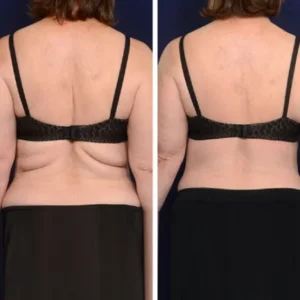
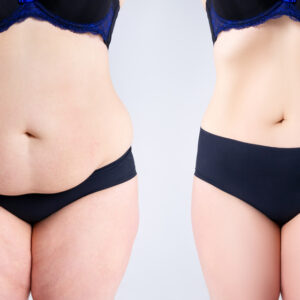

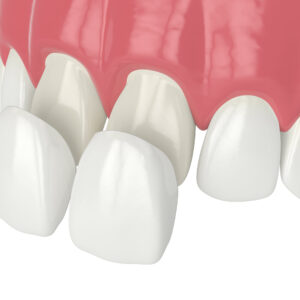

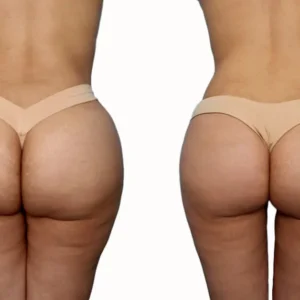
Reviews
There are no reviews yet.